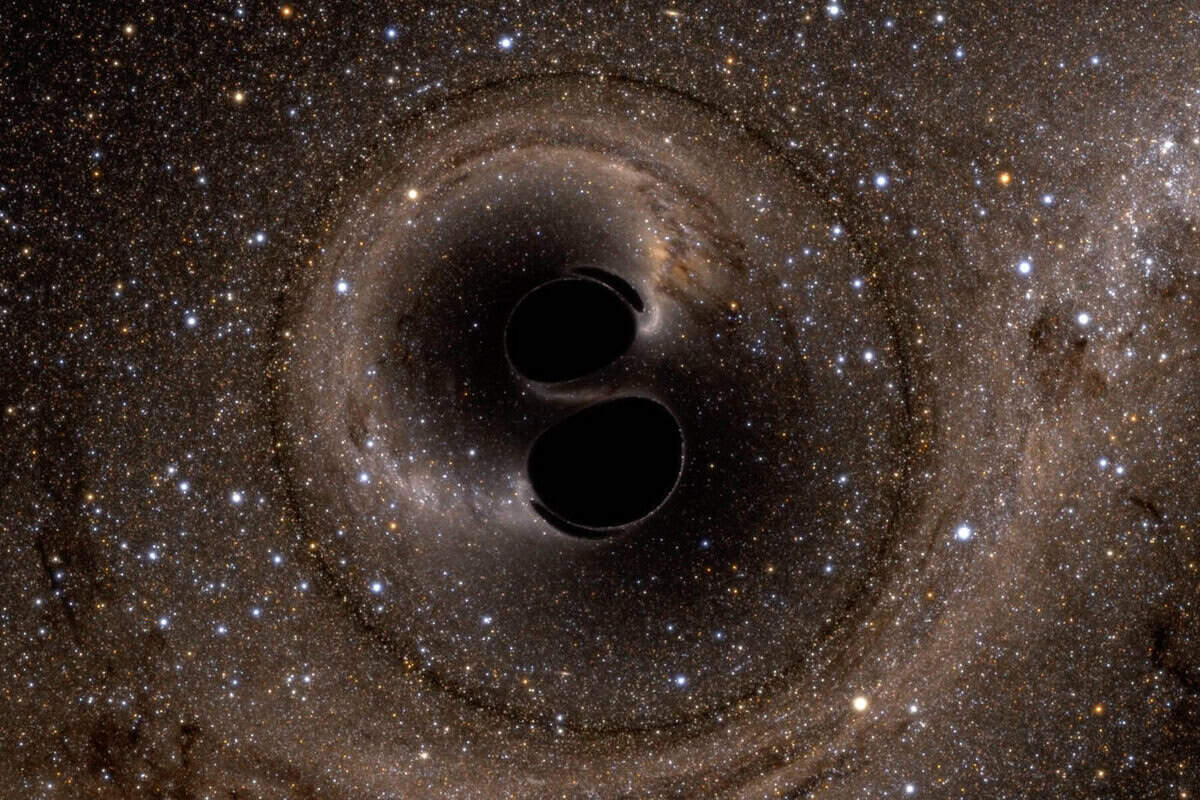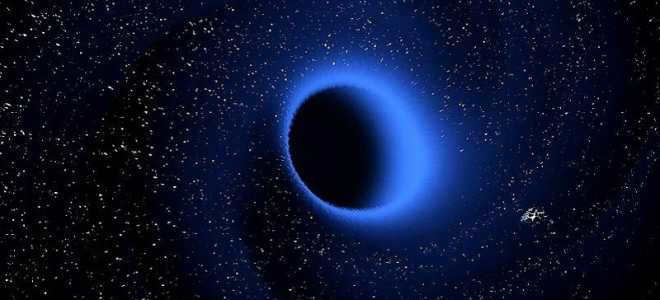
In all honesty, there exists a plethora of theories regarding black holes, ranging from mythical and imaginative explanations to scientific perspectives on their very existence. Despite the fact that the true nature of black holes still eludes scientists.
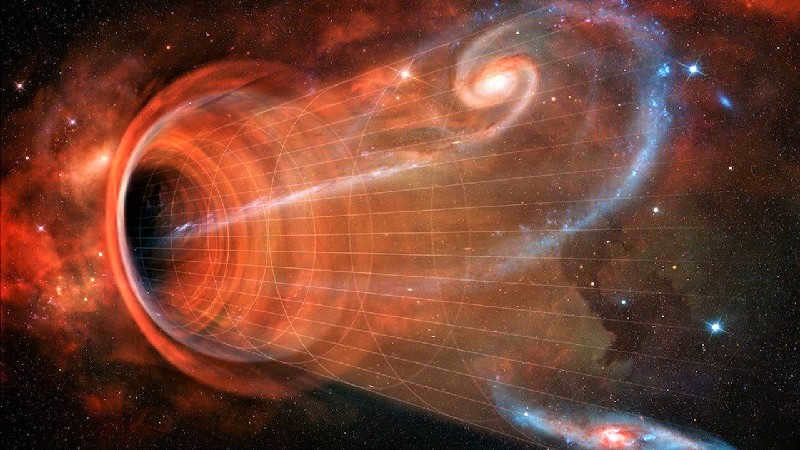
Black hole theory and the theory of relativity
Initially, the existence of black holes was purely speculative. Primarily, they were predicted by Albert Einstein’s general theory of relativity, which he proposed in 1915-1916.
As is well-known, this theory describes gravity as a manifestation of the geometry of spacetime. This concept is based on the idea that gravity and inertia have the same nature of appearance.
In 1916, Karl Schwarzschild successfully solved Einstein’s initial equation. He determined the gravitational field created by a spherically symmetrical mass with zero electric charge. According to his calculations, the size of objects determines the gravitational radius of these bodies, from which not even photons can escape.

A representation of our universe
As per the representation of the universe, the observable Universe is enclosed within a black hole. In an ideal scenario, the radius at which it becomes impossible to perceive other objects should correspond to the Schwarzschild radius. Scientists currently believe that they are precisely equal.
Furthermore, in such representations, the expansion of the visible Universe is considered as an accelerating infinite descent. Simultaneously, the Big Bang marks the commencement of the implosion of our Universe within the Schwarzschild radius. To put it simply, the explosion occurs inwardly.
In simpler terms, our Universe is akin to a black hole, with the Hubble radius serving as the event horizon.
Space-time is curved by a black hole.
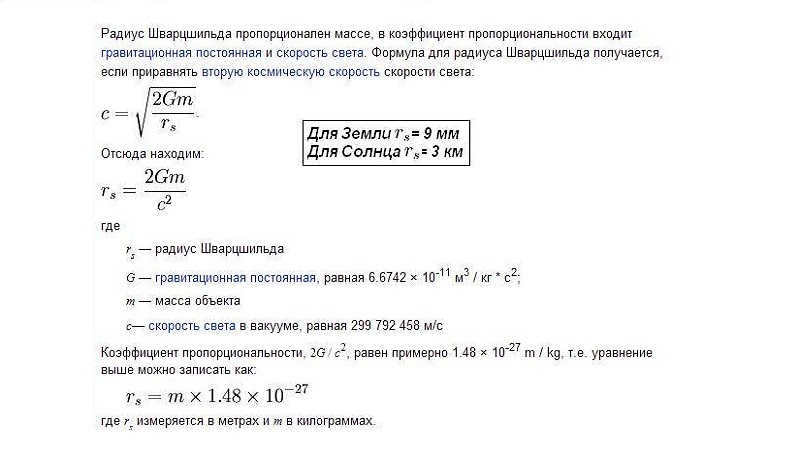
Stephen Hawking’s theory of black holes.
Undoubtedly, Stephen Hawking was an exceptional scientist and theoretical physicist. He made numerous groundbreaking discoveries and significantly contributed to our understanding of the universe.
Moreover, he authored several captivating books, including “A Brief History of Time: From the Big Bang to Black Holes,” “The Theory of Everything: From Singularity to Infinity – The Origin and Fate of the Universe,” and “Black Holes and Young Universes.”
Hawking proposed that as a star collapses, its gravitational pull becomes so strong that even light cannot escape. This region, where nothing can break free, is known as a black hole.
In fact, his theory of black holes is extensively elaborated in the aforementioned book. I highly recommend delving into it.
Stephen Hawking explored the behavior of elementary particles in the vicinity of space-time regions, utilizing the principles of quantum mechanics. Consequently, he deduced that certain particles are capable of surpassing the event horizon. Hawking contended that a black hole is not entirely devoid of light, as residual radiation exists.
Hawking’s theories have reshaped our perception of the cosmos, yet some remain enigmatic to scientists. “Hitech” delves into some of the eminent scientist’s most precise, peculiar, and flawed conjectures.
Discover “Hytek” on
Stephen Hawking, despite doctors’ predictions, had a career that lasted more than 50 years and made him one of the most brilliant theoretical physicists of our time. He continuously made groundbreaking discoveries about the universe from the time he completed his doctoral thesis in 1966 until his passing at the age of 76 in 2018. Just days before his death, Hawking published his final paper.
Hawking was at the forefront of intellectual physics, and his theories often appeared outlandish when he first proposed them. However, over time, they have slowly gained acceptance within the scientific community. Whether it’s his revolutionary ideas about black holes or his explanations for the origin of the universe, here are some of Hawking’s theories that have either been confirmed or remain unverified.
The victory of the big bang
Hawking embarked on the writing of his doctoral dissertation during a period of intense debate within the scientific community regarding the origins of the universe. Two competing concepts sought to explain the beginning of everything – the Big Bang theory and the steady state theory. Both acknowledged the expansion of the universe, but the former proposed an expansion from an incredibly compact and dense state, while the latter suggested an eternal expansion, with the constant creation of new matter to maintain a uniform density.
In his thesis, Hawking demonstrated the inherent mathematical contradictions of the steady state theory. The physicist argued that the universe originated from an infinitesimally small and infinitely dense point, known as a singularity. Hawking’s description is now widely accepted by scientists worldwide.
Hawking is most commonly associated with black holes – another form of singularity. These entities are created when a star collapses due to its own gravitational pull. The issue was that the existence of black holes, although consistent with Einstein’s general theory of relativity, contradicted the principles of quantum physics. In the early 1970s, Hawking shifted his focus to black holes.
As stated in an article in Nature, he merged Einstein’s equations with those of quantum mechanics to demonstrate the plausibility of black holes. Consequently, what was once a theoretical concept became a viable hypothesis. The ultimate confirmation of Hawking’s correctness came in 2019 when the Event Horizon telescope captured a direct image of a supermassive black hole lurking at the core of the colossal galaxy Messier 87.
Black holes are named such because their gravity is incredibly powerful, preventing even light particles or photons from escaping. However, in his initial writings on the matter, Hawking posited that the situation was not as straightforward.
Hawking radiation
Black holes earned their name due to their immense gravitational pull, which makes it impossible for photons or light particles to escape. Nonetheless, Hawking’s early research on the topic suggested otherwise.
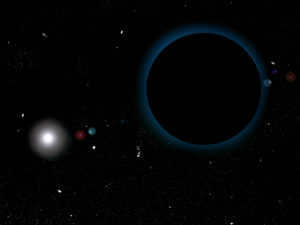
By utilizing quantum theory, specifically the concept that pairs of “virtual photons” could spontaneously emerge from nothingness, he came to the realization that certain of these particles appeared to be emitted by a black hole. This concept, now known as Hawking radiation, was recently verified in a laboratory experiment at the Technion Institute of Technology in Israel. Instead of an actual black hole, the scientists employed an acoustic analog – a “sonic black hole” from which sound waves are incapable of escaping. They observed the exact equivalent of Hawking radiation, just as physicists had predicted.
The conundrum of information
The presence of Hawking radiation presents a significant dilemma for theorists. As per Hawking’s calculations, black holes are expected to emit elementary particles and eventually evaporate. This appears to be the sole physical process that eliminates information from the universe. Consequently, the fundamental properties of the matter that comprised the black hole are permanently lost; the emitted radiation offers no insight into said properties. Nevertheless, this contradicts the fundamental principles of quantum mechanics. This contradiction is commonly referred to as the “information paradox,” and scientists have dedicated the past four decades to resolving it.
An unusual title for the article is a nod to the “no hair theorem” of a black hole, which refers to the idea that black holes do not possess any “hair” or information about matter that they have absorbed. The article delves into the information paradox, a topic that scientists have been grappling with for years – what happens to information in black holes? While Hawking’s theory about “hairy” black holes is just one of many hypotheses, the information paradox still remains unsolved.
Multiverse
During the later years of his life, Stephen Hawking engaged in the study of the multiverse concept – the notion that our universe, which originated from the Big Bang, is merely a solitary entity among an endless array of coexistent “bubble universes.”
However, Hawking was dissatisfied with some scientists’ assumption that every absurd situation imaginable is currently occurring somewhere in this endless collection of parallel universes. Therefore, in his most recent paper in 2018, Hawking attempted to bring order to the multiverse. He presented a novel mathematical framework that, while not completely rejecting the concept of the multiverse, defined it as finite rather than infinite. However, as is the case with any speculation concerning parallel universes, the accuracy of his ideas remains uncertain. Additionally, it is improbable that scientists will have the means to experimentally validate his hypothesis in the near future.
The Chronology Security Hypothesis
It may sound surprising, but according to our current understanding of the laws of physics, time travel is not prohibited. The equations of Einstein’s general theory of relativity allow for the existence of “closed time curves,” which would theoretically enable a person to travel back into their own past. However, Stephen Hawking was unsatisfied with this notion, as he believed that traveling backwards in time would create logical paradoxes that are inherently impossible.
As a result, Hawking proposed the hypothesis that there must be some unknown law of physics that prevents the formation of closed time curves. He referred to this idea as the “chronology defense hypothesis.” However, it is important to note that this is merely a speculation, and whether or not time travel is actually possible remains unknown.
During the last years of his life, Hawking made a series of grim predictions concerning the fate of humanity.
These ranged from the notion that the elusive Higgs boson, also known as the “God particle,” could trigger a vacuum bubble that would consume the entire universe, to the possibility of hostile alien invasions and the takeover of Earth by artificial intelligence. While Stephen Hawking was accurate in many of his predictions, we can only hope that he was mistaken in this particular one.
Learn more
The concept of cosmological singularity refers to the presumed state of the Universe at the moment of the Big Bang. It is one of the instances of gravitational singularities that are foreseen by the General Theory of Relativity (GTR) and other gravitational theories.
There are occasions in scientific thinking when objects are created with properties so paradoxical that even the most perceptive scientists initially hesitate to acknowledge them. The most notable case in the annals of modern physics is the prolonged lack of interest in black holes, which are extreme manifestations of gravitational forces and were predicted nearly 90 years ago. For a considerable period of time, they were perceived as purely theoretical constructs, and it was only in recent years that their existence came to be accepted. Nevertheless, the fundamental equation of black hole theory was formulated more than two centuries ago.
John Michell’s revelation
The reputation of John Michell, a physicist, astronomer, and geologist who served as a professor at Cambridge University and a pastor in the Anglican Church, has unjustly faded among the luminaries of 18th-century English science. Michell made significant contributions to the field of seismology, the study of earthquakes, and conducted groundbreaking research on magnetism. He was also an early adopter of torsion scales, predating Coulomb’s invention, which he utilized for gravimetric measurements. In 1783, he embarked on an ambitious endeavor to bridge the gap between Sir Isaac Newton’s two monumental discoveries: mechanics and optics. While Newton envisioned light as a stream of minuscule particles, Michell postulated that these light particles, much like ordinary matter, adhered to the laws of mechanics. This hypothesis led to a remarkable implication – celestial bodies could potentially ensnare light.
What was the rationale behind Michell’s thinking? In order for a cannonball to completely overcome the gravitational pull of a planet when fired from its surface, it must have an initial velocity that surpasses a certain value known today as the second space velocity or escape velocity. If the planet’s gravity is so strong that the escape velocity is greater than the speed of light, then any light particles fired towards the zenith will not be able to escape to infinity. The same applies to reflected light. As a result, to an observer located very far away, the planet would appear invisible. Michell performed calculations to determine the critical radius of such a planet, denoted as Rkr, which is a function of its mass M relative to the mass of our Sun, Ms: Rkr = 3 km x M/Ms.
John Michell was a firm believer in his formulas and held the belief that there were numerous stars hidden in the depths of space, beyond the reach of any telescope on Earth. This same conclusion was later reached by the esteemed French mathematician, astronomer, and physicist Pierre Simon Laplace, who included it in the initial (1796) and subsequent (1799) editions of his famous work, “Statement of the World System”. However, by the time the third edition was published in 1808, the majority of physicists had already adopted the view that light was a fluctuation of the ether. The existence of these “invisible” stars went against the wave theory of light, leading Laplace to omit any mention of them. As time went on, this concept was considered more of a curiosity and became relegated to the realm of historical physics literature.
The Schwarzschild model
The General Theory of Relativity (GTR), a theory of gravity, was published by Albert Einstein in November 1915. This groundbreaking work was met with enthusiasm by Karl Schwarzschild, a colleague of Einstein at the Berlin Academy of Sciences. Schwarzschild became the first person to apply GR to solve an astrophysical problem, specifically the calculation of metrics for the region inside and outside of a non-rotating spherical object, which we will refer to as a star for clarity.
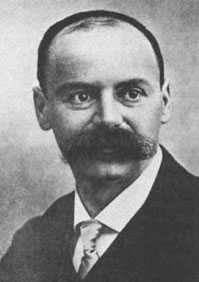
Karl Schwarzschild, a German astronomer and one of the pioneers of theoretical astrophysics, is featured in this photograph taken from www.krugosvet.ru.
According to Schwarzschild’s calculations, if a star has a radius much larger than the value calculated by John Michell, its gravitational pull will not significantly distort the Newtonian structure of space and time. This value is now known as the Schwarzschild radius, or the gravitational radius. In accordance with general relativity (GR), gravity does not affect the speed of light, but it does cause a decrease in the frequency of light oscillations, which corresponds to a slowdown in time. When the radius of a star is four times greater than its gravitational radius, time on its surface slows down by 15% and space becomes noticeably curved. If the radius is twice as large, the curvature of space is even more pronounced and time slows down by 41%. When the gravitational radius is reached, time on the star’s surface comes to a complete halt, all frequencies become null, radiation ceases, and the star extinguishes. However, the curvature of space remains finite. Outside of the star, the geometry remains Euclidean and the speed of time remains constant.
Despite the fact that the gravitational radius values in Michell and Schwarzschild coincide, the two models are completely different. In Michell’s model, space and time remain constant while light slows down. A star smaller than its gravitational radius still emits light, but it can only be seen by a nearby observer. On the other hand, in Schwarzschild’s model, the speed of light is constant, but the structure of space and time is influenced by gravity. If a star falls below its gravitational radius, it becomes invisible to any observer, regardless of their location. However, its presence can be detected through gravitational effects, rather than radiation.
Transitioning from skepticism to acceptance
Schwarzschild and his peers were skeptical of the existence of such peculiar cosmic entities in the natural world. Even Einstein, who shared this viewpoint, erroneously believed that he had mathematically substantiated his stance.
In the late 1930s, Robert Oppenheimer, the future father of the American atomic bomb, determined that there is a limit to the mass of neutron stars, and this limit does not exceed a few solar masses. At that time, it was not possible to provide a more precise estimate, but we now know that the masses of neutron stars fall within the range of 1.5-3 Ms. However, Oppenheimer and his graduate student George Volkov’s approximate calculations indicated that the most massive remnants of supernovae do not become neutron stars, but instead transition into another state. In 1939, Oppenheimer and Hartland Snyder demonstrated on an idealized model that a collapsing star of significant mass would shrink to its gravitational radius. Their formulas actually suggest that the star does not stop there, but the co-authors refrained from drawing such a radical conclusion.
Over the horizon, there lies
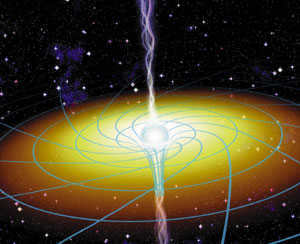

A black hole can be described as a gravitational field that is concentrated in a region of space-time with a high curvature (image from www.science.nasa.gov)
A black hole is not made up of matter or radiation. In a figurative sense, we can say that it is a gravitational field that is self-sustaining and concentrated in a region of space-time with a high curvature. Its outer boundary is defined by a closed surface known as the event horizon. If the star that collapses into a black hole is not rotating, this surface takes the form of a regular sphere with a radius equal to the Schwarzschild radius.
The significance of the horizon is easily understood. A light signal sent from the outer region of the horizon can travel an infinite distance. However, signals sent from the inner region will not only fail to cross the horizon, but will inevitably be drawn towards the singularity. The horizon acts as a spatial boundary between events that can be observed by astronomers on Earth (or any other location), and events that will never be detectable under any circumstances.
According to Schwarzschild’s theory, the gravitational pull of a black hole diminishes as the distance from the event horizon increases. This means that for an observer far away, the black hole appears to be just like any other massive object. Besides its mass, a black hole also inherits the angular momentum and electric charge of the collapsing star. However, all other properties of the original star, such as its structure, composition, and spectral class, are lost in the process.
Quantum foam and its role in wormhole radiation
Previous models of wormholes were based solely on General Relativity (GR). However, our understanding of the universe is governed by the laws of quantum mechanics, which cannot be ignored when considering black holes. In the quantum realm, the central singularity of a black hole cannot be treated as a mathematical point, but rather has a finite size known as the Planck-Wheeler length, which is approximately one centimeter.
Within this region, conventional notions of space break down and are replaced by a complex network of topological structures. These structures, which arise and disappear according to quantum probabilistic rules, give rise to a bubbling quasi-space known as quantum foam. Wheeler, one of the pioneers in the field, coined this term to describe the mysterious properties of this foam-like structure.
Despite extensive research, the nature of quantum foam and its implications for wormholes are still not fully understood. However, it is believed that the dynamic nature of quantum foam could play a significant role in the radiation emitted by wormholes.
The existence of a quantum singularity is closely tied to the destiny of material entities plummeting into the depths of a black hole. As an object ventures closer to the heart of the abyss, it will be subjected to immense tidal forces, resulting in its annihilation and fragmentation. Nevertheless, even if forthcoming scientists and engineers manage to fabricate incredibly sturdy alloys and composites with extraordinary characteristics that surpass our current understanding, these advancements will ultimately be futile. This is due to the fact that within the singularity region, conventional notions of time and space cease to exist.
Now, let’s examine the horizon of a black hole through the lens of quantum mechanics. The empty space, known as the physical vacuum, is not truly empty. It is filled with various fields that constantly give rise to virtual particles, which come into existence and then quickly disappear. The intense gravitational forces near the black hole’s horizon result in powerful fluctuations, causing these virtual particles to gain additional energy and occasionally transform into stable, long-lasting particles.
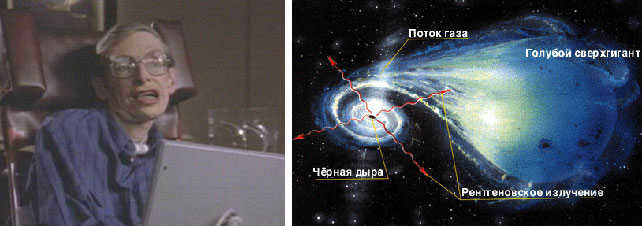
Virtual particles always come into existence as pairs moving in opposite directions (as dictated by the law of conservation of momentum). If a gravitational fluctuation pulls a pair of particles out of the vacuum, it is possible for one of them to materialize outside the event horizon, while the other (the antiparticle of the first) materializes inside. The “inner” particle will fall into the black hole, while the “outer” one can escape under certain conditions. This causes the black hole to emit radiation and consequently lose energy and mass. Therefore, black holes are inherently unstable.
The vastness of the cosmos
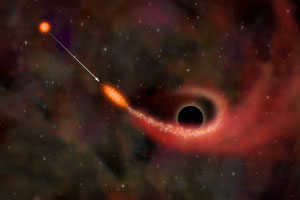

If a black hole comes in close proximity to a star, the star will undergo “stretching” due to the tidal gravitational forces, resulting in its complete tearing apart. The majority of the star’s material will be able to “escape”, but a part of it will be captured, leading to the formation of a rotating disk around the black hole. The heating of the gas as it falls into the black hole causes the emission of X-rays by the matter in the disk (image from antwrp.gsfc.nasa.gov)
Although the laws of physics do not prohibit the existence of black holes, it remains uncertain whether they are present in the natural world. Despite extensive research, there has yet to be definitive evidence of even a single black hole in the cosmos. However, it is highly probable that certain double systems contain X-ray sources that are black holes originating from stars. These black holes are believed to emit X-rays as a result of the gravitational pull causing them to consume the atmosphere of a regular star. As the gas moves towards the event horizon, it becomes intensely heated and emits X-ray photons. Currently, at least twenty-four X-ray sources are being considered as potential black hole candidates. Furthermore, based on stellar statistics, it is estimated that our Galaxy alone contains approximately ten million black holes of stellar origin.
Black holes can form through the gravitational collapse of matter in the cores of galaxies. This means that there are massive holes, with masses in the millions and billions of times that of our sun, likely present in many galaxies. It seems that within the center of the Milky Way, there is a concealed dust cloud that hides a black hole with a mass of one million solar masses.
Stephen Hawking has theorized that black holes of any mass could have been created shortly after the Big Bang, which gave birth to our Universe. Smaller black holes, with masses up to a billion tons, have already evaporated, but larger ones may still exist, lurking in the depths of space, ready to unleash cosmic fireworks in the form of powerful flares. However, these explosive events have yet to be observed.
Is it possible to accelerate the particles in the gas pedal to such a high energy that their collision results in the formation of a black hole? At first glance, this concept may seem absurd – the resulting explosion would annihilate all life on Earth. Furthermore, it is technically unachievable. If the minimum mass of the black hole is indeed 22 micrograms, then in terms of energy, it is equivalent to 10^28 electronvolts. This threshold is 15 orders of magnitude greater than the most powerful gas pedal in the world, the Large Hadron Collider (LHC), which is set to be operational at CERN in 2007.
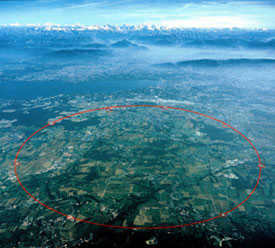
According to string theory, it is predicted that a black hole weighing only 10-20 g can be formed in a nine-dimensional space. This is roughly equivalent to the relativistic mass of protons that are accelerated in the CERN super-accelerator. In the most optimistic scenario, it is believed that the super-accelerator will be capable of producing one black hole every second, with each black hole having a lifespan of a few seconds. During the process of evaporation, various elementary particles will be created, which can be easily detected. When the black hole eventually disappears, it will release a small amount of energy, not even enough to raise the temperature of a microgram of water by a thousandth of a degree. Therefore, there is hope that the LHC will be able to generate harmless black holes. If these theoretical models are correct, these black holes can be detected by next-generation orbital detectors for cosmic rays.
All of the aforementioned pertains to stationary black holes. In the meantime, there are also spinning holes that possess a fascinating array of characteristics. The findings from the theoretical examination of Chernobyl radiation also prompted a significant reevaluation of the notion of entropy, which warrants its own separate discourse. Further details will be explored in the upcoming edition.

In the realm of renowned physicists, we find Stephen Hawking, a remarkable individual whose life’s work revolves around tackling humanity’s most pressing issues. His contributions to the field of cosmology have greatly enriched the annals of global scientific knowledge. Join us as we delve into the remarkable life of Stephen Hawking, and explore the profound impact this extraordinary man has had on the advancement of modern science.
The biography of the renowned scientist contains numerous fascinating details. Stephen Hawking, an astrophysicist (1942-2018), gained worldwide recognition as a promoter of scientific exploration in the fields of space, astrophysics, sociology, and as the author of the acclaimed book “A Brief History of Time.”
Let us delve into the journey that shaped the life of this exceptional scientist:
Childhood, Adolescence, and Early Years
During World War II, the family of Frank Hawking, a British medical doctor, had to relocate to Oxford in order to escape the bombings in London. It was on January 8, 1942, in Oxford, that their first child, Stephen, was born, healthy and strong.
Stephen Hawking grew up in an environment steeped in science. Both his father and mother, who had graduated from Oxford University, had careers in the medical field. His father dedicated himself to researching tropical diseases. Stephen had two sisters, Mary and Philippa, as well as a foster brother named Edward.
After completing his secondary education, young Stephen pursued a degree in physics at Oxford University. In 1962, he graduated with a bachelor’s degree and went on to further his studies at Cambridge. It was there that this talented student successfully defended his master’s thesis in philosophy in 1966.


When he was young, Hawking was involved in sports and was the life of the party, but his fate took a cruel turn. He was struck by a debilitating disease that affected his nervous system, forcing him to rely on a wheelchair. Despite this, he remained strong-willed and refused to succumb to despair, using his determination to continue his work and make new discoveries. His courage and perseverance were admired and served as inspiration for people all over the world.
The scientist dedicated himself to scientific research, reading extensively and collaborating with renowned individuals. Hawking’s contributions were recognized and rewarded:
- In 1974, he was granted permanent membership in the Royal Society of London.
- In 1979, he became a member of the group of professors who were awarded the highest academic position – the Lucasovsky Professor of Mathematics. This prestigious honor had previously been bestowed upon Isaac Newton in the 17th century.
The global scientific community recognized the remarkable achievements of this exceptional scientist with numerous accolades, awards, and prizes.
Despite his illness, the young scientist did not let it weaken his spirit. Stephen Hawking, who had both bright and dark moments in his personal life, always looked towards the future with optimism.
Hawking was married twice. His first marriage was in 1965, after he had already received the devastating diagnosis of amyotrophic lateral sclerosis. His wife, Jane Wilde, was a student at Cambridge University and they had three children together.


The children of Stephen Hawking were born in perfect health. From a young age, they had the opportunity to travel extensively with their father and mother, who always supported him. Here is what became of the Hawking children:
- Robert Hawking, the eldest son (born in 1967), pursued a career in software engineering. He currently resides in the United States with his family and works at Microsoft.
- Kathryn Lucy Hawking, the scientist’s daughter (born in 1970), is involved in literature and education. She lives in London.
- Timothy Hawking, the youngest son (born in 1979), holds a university degree and serves as an executive director at LEGO.
Following a quarter of a century of matrimony, the relationship deteriorated, leading to a divorce after a five-year separation. Elaine Mason, a caregiver, played a pivotal role in Stephen William Hawking’s life. She became the scientist’s primary aide. The couple went their separate ways in 2006, as science took precedence in the researcher’s life.
The illustrious figure’s journey came to an end at the age of 77. Stephen Hawking, whose date of demise is inscribed on the gravestone at Westminster Abbey in London, left behind an immense scientific legacy.
Stephen Hawking: Impact on the Field of Science
While based in Cambridge, this brilliant scientist found opportunities to explore different parts of the globe and delve into the research of electromagnetic radiation. His unique perspective and groundbreaking theories revolutionized the field of physics, particularly in the realm of quantum cosmology.
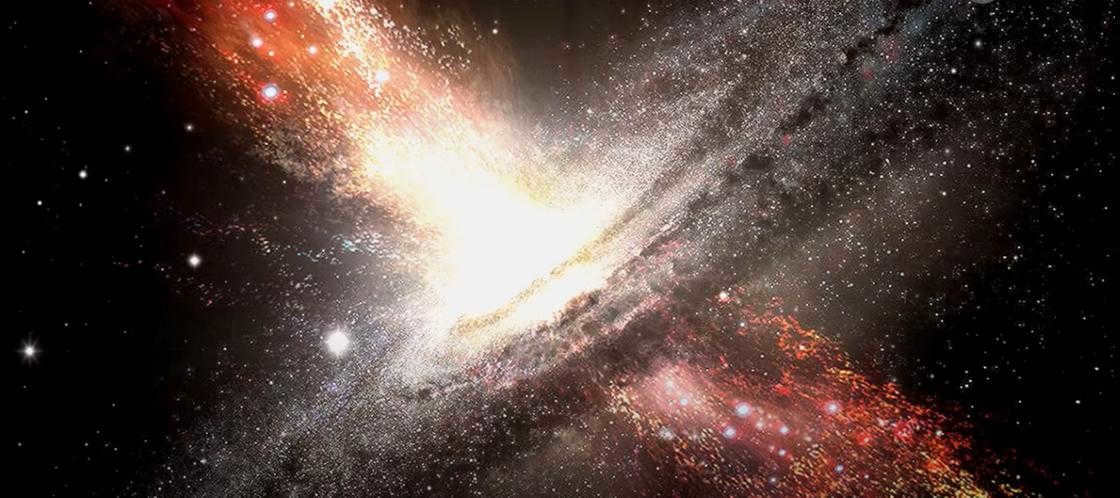
Stephen Hawking’s biography is filled with information about his scientific achievements and theories. Let’s examine them in depth:
Scientific Discoveries
While studying space and electromagnetic radiation, Stephen William Hawking made several significant discoveries:
- By utilizing the theorems formulated by renowned professor Roger Penrose, Hawking provided confirmation of the existence of black holes based on the theory of gravitational singularity. He proposed that the Big Bang in the universe may have occurred due to the emergence of an infinitesimally small point (singularity).
- The energy emitted by black holes became known as “Hawking radiation”. This phenomenon involves a loss of mass for the black hole, which the scientist attributed to quantum effects near their event horizon.
- During the Big Bang, the cosmologist put forward a hypothesis suggesting the presence of numerous small black holes. These black holes were incredibly hot and gradually lost mass until eventually disappearing. The energy accumulated within them was then released through a powerful explosion.
- In the 1970s, the professor dedicated his studies to the examination of particles and light radiation that fell into black holes.
- In collaboration with American physicist James Hartl, the astrophysicist formulated the theory of the universe’s wave function, utilizing quantum mechanics in their research. However, describing the history of the cosmos could not be achieved through a single mathematical formula. Nonetheless, the Hartle-Hawking concept allowed for the possibility of parallel universes, where planets resembling Earth could exist.
During the 1990s, Stephen Hawking dedicated his research to the examination of black holes, following the guiding principle of cosmic censorship. Throughout the final two decades of his life, the renowned scientist concentrated on unraveling the enigma of the black hole information paradox. He came to the realization that although information persists within the universe even after black holes have evaporated, it remains beyond human reach.
Books
One notable aspect of the theoretical physicist’s biography was his foray into literature. In addition to his scholarly dissertations and treatises, the professor also penned a collection of popular science books. Among his most renowned publications are:
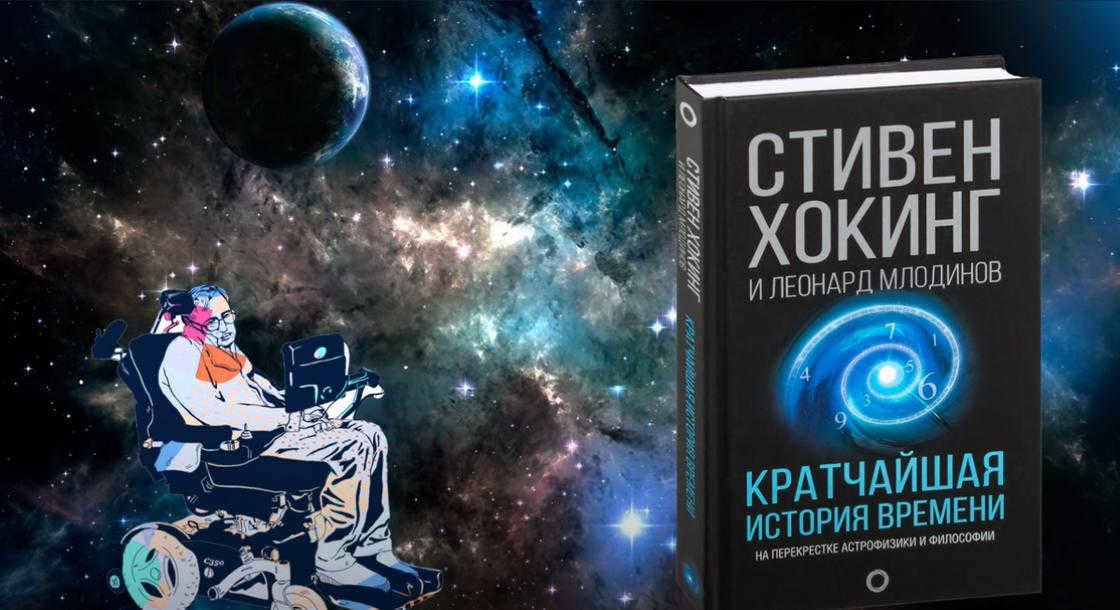
- “A Brief History of Time” (1988);
- “Black Holes and Young Universes” (1980);
- “The World in a Nut Shell” (2001);
- “A Brief History of Time” (2005); and “The Supreme Design” (2010), co-authored with Leonard Mlodinow;
- “George and the Mysteries of the Universe” (2006), a children’s book co-authored with his daughter Lucy;
- “The Theory of Everything” (2006);
- “My Brief History. An Autobiography” (2013).
Stephen Hawking, despite the progression of his disease, maintained an active lifestyle throughout his life:
- He delivered speeches, authored books, traveled, experienced zero gravity flights, and even had plans to venture into space.
- Utilizing a speech synthesizer after throat surgery, his electronic voice lent itself to characters in popular cartoons such as “The Simpsons” and “Family Guy”.
- Hawking made appearances in episodes of renowned series like “Star Trek” and “The Big Bang Theory”, which showcased the remarkable achievements of his lifetime.
Stephen Hawking, with a biography brimming with captivating events and intriguing facts, is not only a distinguished theoretical physicist of the 21st century, but also a successor to the esteemed Isaac Newton.
He is an exceptional individual, embodying perseverance, bravery, and honesty in the exploration of the enigmas of the cosmos. He is a visionary, whose physical well-being has been taken by nature, yet he possesses a brilliant intellect, a gift for talent, and a profound adoration for existence.
We want to express our gratitude to all the readers of our blog for their support and constructive feedback on our articles about outer space. Allow me to continue this topic with a brief compilation of content about black holes, which are arguably the most popular type of celestial bodies after stars and planets. Although our knowledge about these fascinating objects is still limited, they can certainly be described as “mysterious” to a certain extent.
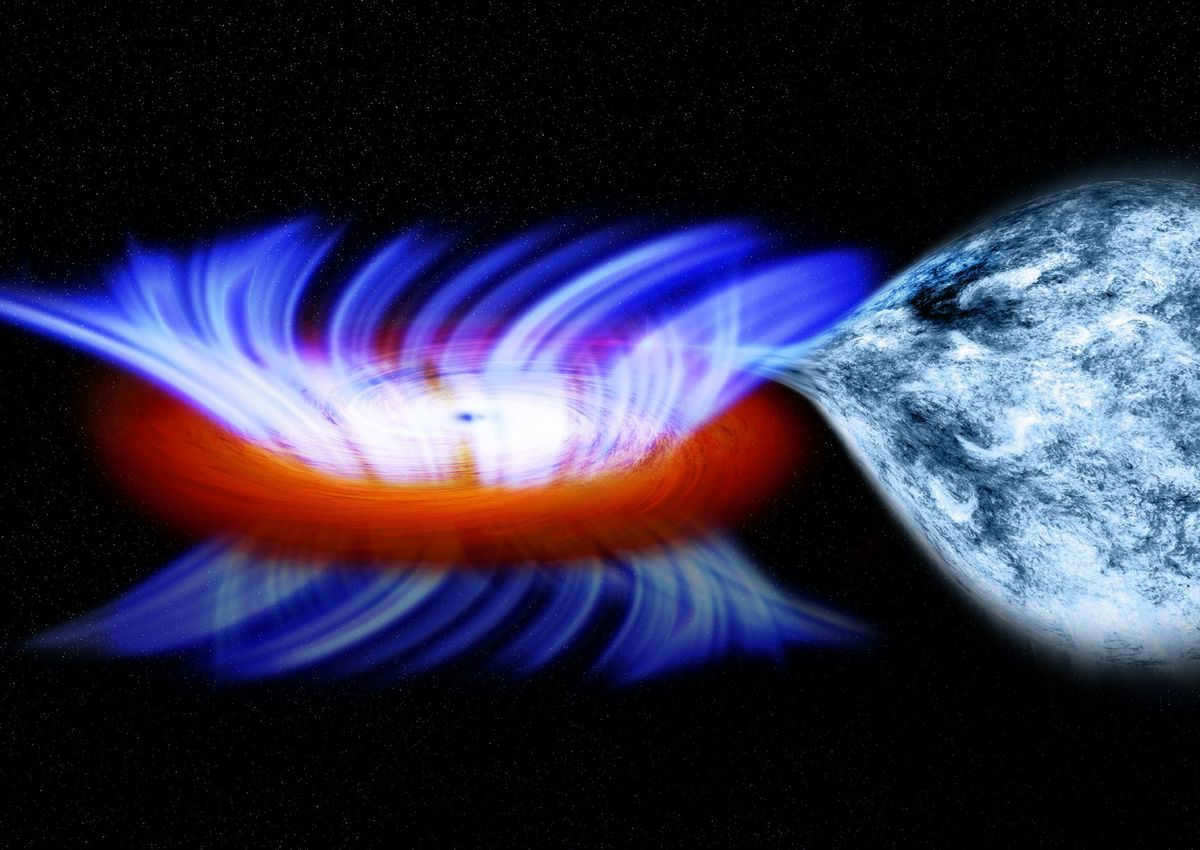
- Microscopic – quantum – Black Holes
- Supermassive Black Holes (10^5 – 10^10 solar masses), which are located at the centers of most galaxies.
- Stellar-mass Black Holes (3-100 solar masses)
Officially, black holes themselves are completely invisible (mainly because even light cannot escape their gravitational pull). However, due to their immense gravitational force, black holes are surrounded by an accretion disk composed of interstellar gases, dust, and other nearby objects.
As matter accumulates and falls into the disk surrounding the black hole, it spirals around and gains tremendous speed, causing it to heat up. This results in the accretion disk emitting radiation in the ultraviolet and X-ray spectra. It is this radiation that enables the detection of black holes in the vastness of space.
Many people consider black holes to be enigmatic and all-consuming representations of the underworld. However, not all matter that orbits around a black hole is absorbed by it. A portion of the matter from the accretion disk is released in the form of cosmic wind due to intense heating and high rotational speeds. For instance, in 2011, scientists made the discovery that the black hole known as IGR J17091-3624, which has a mass similar to that of a star, periodically emits the fastest “winds” known to date. These winds can reach speeds of approximately 30 million km/h, which is equivalent to 3% of the speed of light.
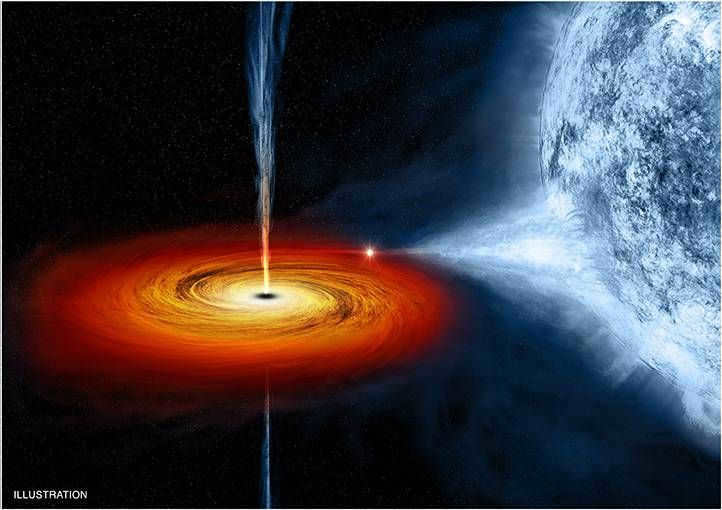
Original
Statistically, stellar-mass black holes should be the most common variety in the Universe. In fact, it is one of the forms of postmortem existence of cooled stars. However, not every star turns into an infinite sink of all things after its demise. Theoretical calculations predict that only if a star has a mass not less than 3-6 times greater than the solar mass, then it has a chance to become a standard Absorber.
Source
According to statistics, stellar-mass black holes are expected to be the most prevalent type in the Universe. In reality, they are one of the possible outcomes of cooled stars after their death. However, not all stars transform into an endless void of matter after their demise. Theoretical computations indicate that only stars with a mass exceeding 3-6 times that of the Sun have the potential to evolve into a conventional Absorber.
As per Schwarzschild’s solution to Birkhoff’s theorem, the formula for determining the radius of the event horizon of a spherical black star is:
R=2GM/c 2 , where G represents the gravitational constant, M represents the mass of the star, and c represents the speed of light.
Supermassive black holes: illustrations
Sagittarius A*.positioned at a distance of 26,000 light-years. It is believed that this supermassive black hole serves as the focal point of our Milky Way galaxy. Its mass is approximately 4,000,000 times that of our Sun. The density is estimated to be around 100 times greater than that of lead.
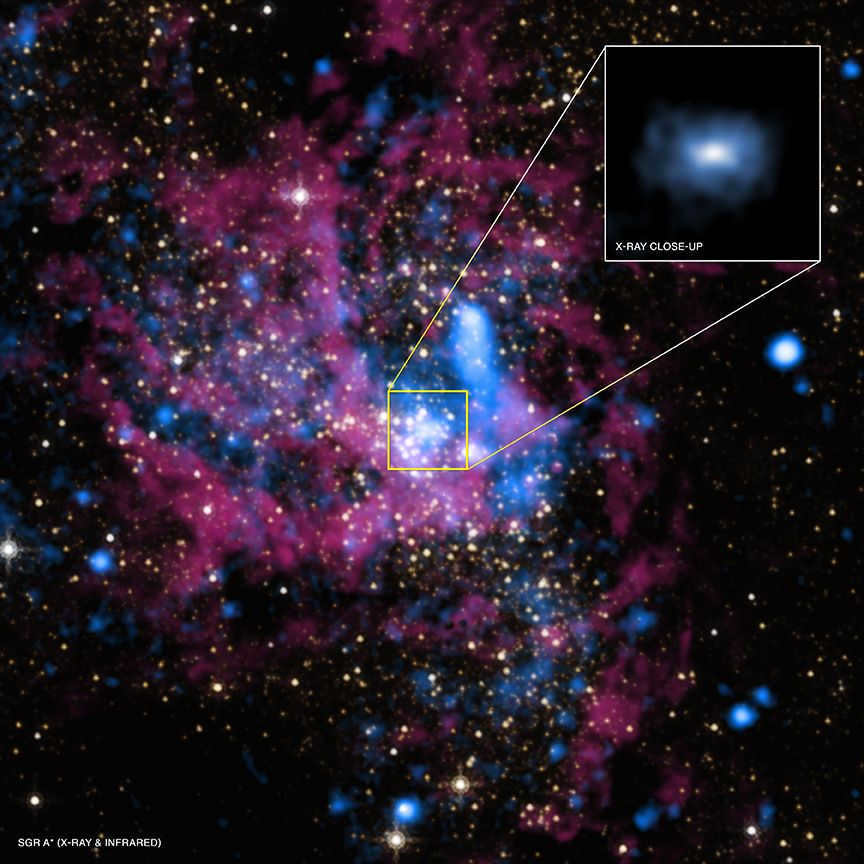
M84 is a colossal galaxy located in the Virgo constellation, situated 55 million light-years from Earth. This image showcases the impressive jets emitted by a supermassive black hole, serving as a remarkable demonstration of cosmic phenomena.
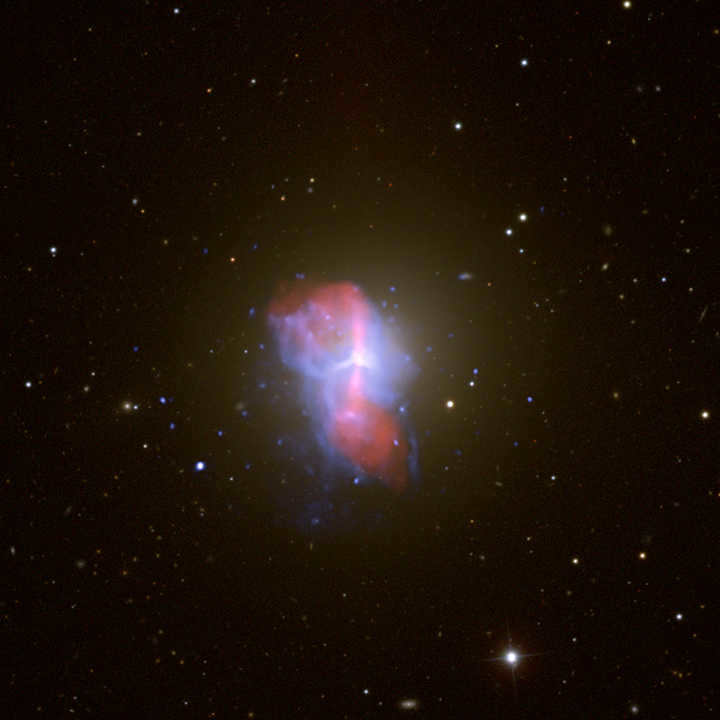
NGC 6240 is a binary system consisting of two supermassive black holes that are currently in the process of merging. At present, there are no definitive theories that explain the dynamics of such phenomena, unlike the well-studied phenomenon of a star colliding with a supermassive black hole. It is widely believed that the merger of these massive black holes is accompanied by the emission of the most powerful gravitational waves in the entire universe.
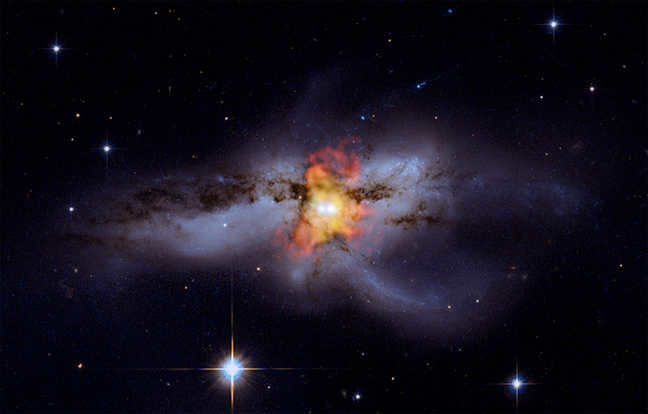
A bit more theory
What is the appearance of falling into a black hole? Logically, one might assume that an object simply disappears into the darkness of the event horizon at some point during its descent. However, this is not the case. As the object approaches the event horizon, it will become elongated in the radial direction and compressed in the transverse direction. Once it reaches the point of no return, the object, now extremely elongated, will gradually slow down and eventually come to a stop. This is because no form of radiation, including visible light, can escape beyond the event horizon. From the perspective of the falling body, the descent will subjectively never happen due to the infinite time dilation.

